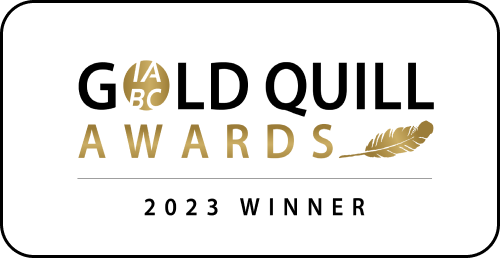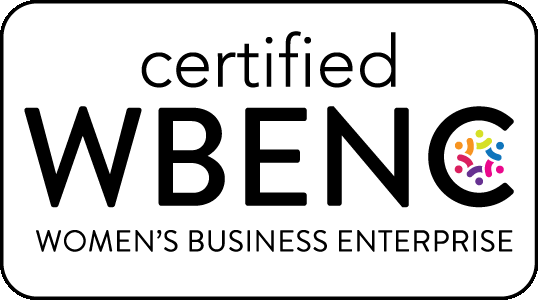A Conversation with Heather Maris, Senior Vice President, Human Resources, Swiss Re
With the COVID-19 pandemic came a fundamental shift in how and where people do their jobs. And, while there is some debate about the benefits and drawbacks of remote work, many of the changes are here to stay:
• A 2022 PricewaterhouseCoopers survey found that 83% of executives believe remote work has been successful at their companies; 72% plan to continue offering a hybrid work option.
• According to an International Workplace Group (IWG) survey of more than 15,000 business people across 80 countries, 70% of professionals work remotely at least one day a week, and 53% work remotely for at least half of the week.
• McKinsey & Company’s 2022 American Opportunity Survey reports that 58% of U.S. job holders – 92 million people – say they can work remotely at least part of the time.
We talked with Heather Maris, Senior Vice President of Human Resources at reinsurance leader Swiss Re, about what the shift to a hybrid work environment has meant for HR communications – and HR programs themselves – at her company.
What are some of the challenges in engaging Swiss Re’s virtual workforce?
We like to think of Swiss Re as a big employer that feels small. We have 15,000 employees globally – 2,500 in the U.S., spread across 10 to 15 major locations, and about 500 teleworkers. And we are in the same boat as almost every other employer – we’re facing the challenge of being a hybrid work force while maintaining and moving our culture to the next level. We’re working through similar questions: How do we engage employees to invest in and maintain the Swiss Re culture? To promote our employee value proposition? What about being a Swiss Re employee will “stick” with people?
Do people want to come back to the office?
Yes, we have seen that sentiment in every constituency at Swiss Re, across the spectrum of job roles, age groups, and locations – even early on in 2021 and 2022 when we first started reopening offices. Now, all our offices are fully open, and we’re encouraging people to come in two or three days a week. We’re sponsoring many of the same activities as other employers – mixers and so forth – to bring people in. And I think we’ve done a pretty good job. We’re seeing more people and activity in our bigger offices. Some groups are more engaged and want to be plugged into office activities; others aren’t ready.
Are there generational differences in how people view working remotely – or at Swiss Re generally?
Yes and no. Reinsurance is a conventional, long-established business, and for us it’s not just about working from home or the office. We’re finding that we can engage our teams by focusing on Swiss Re’s goals, purpose, mission, and vision, and the role we play in society. At its core, reinsurance is about building global resilience – preparing for and protecting against the world’s biggest risks, which is a mission that motivates people.
How does mentoring fit into the Swiss Re culture? Has anything changed with the shift to remote/hybrid?
We know that mentoring is super important to our younger workforce. We’re a global organization in a specialized business, and we’ve always placed a high value on information-sharing and collaboration. Mentoring is a natural outgrowth of that, and it comes in all shapes and sizes at Swiss Re – the shift to hybrid hasn’t changed that.
There are informal relationships happening organically on the ground, along with transition situations – for example, someone who is planning to retire in six to nine months will connect with a younger colleague to start transferring their portfolio and institutional knowledge. And several of our business units and leadership teams have launched specific, formal mentorship programs that have been very successful. Those take place face-to-face, virtually, in group settings. You name it, it’s happening.
Since the pandemic, have you seen an uptick in usage of certain benefits? Have you introduced or eliminated programs?
We did see an increase in the use of certain benefits – particularly emergency back-up childcare and elder care planning, although the interest in eldercare planning may be related as much to our employee demographics as to the pandemic. And as we promote these programs more heavily, people are using them more.
We haven’t eliminated any programs, but we have evaluated them in light of our Diversity, Equity, and Inclusion objectives to make sure our offerings are equitable and responsive to the populations that we serve.
In the U.S. specifically, one thing that surprised us is what’s happening in the virtual medicine arena. As you’d expect, use of services like Teladoc, which we offer, increased during the pandemic when many medical offices were closed. What we’re seeing now is an increasing trend for primary care doctors and other providers to offer care online – which means they’re suddenly competing with existing virtual providers. And that’s creating tension in the system that the industry – and well as plan sponsors – will need to address over the next couple of years.
Since the shift to remote/hybrid work, what methods of communication and interaction have been most successful at Swiss Re?
Prior to 2020, Swiss Re was something of a trailblazer – 10 to 15 percent of our people were teleworking. So, when we flipped the switch to remote working it was a bit easier for us than for many organizations because much of the technology was already in place.
What we quickly realized is that, like many companies, we had become overly reliant on pushing out HR material via email and expecting people to read it. But the pandemic put a new spotlight on HR. We became an important source of information – about the pandemic itself, work protocols, benefits – and we had to look at different ways of reaching people. So, our communications took on a new look and feel.
We created a series of web pages for our enterprise portal, so people had real-time information at their fingertips. This was our biggest push – creating a single source of truth and giving people access to that platform via smart phones, through computers and laptops, and from Teams meetings – using multiple communication channels to keep information and people up to date.
How has your communications approach evolved as we’ve moved from the early phase of the pandemic?
As CDC/government guidance changes and new data emerges, people still need access to current information, so we are keeping our pandemic resources in place. And we’re maintaining that “single source of truth” approach, using the enterprise portal to encourage employee self-service. We continue to leverage our Yammer network to help people make connections, start conversations, and get answers to questions.
With benefits, we’ll always have people who need “just in time” service – they won’t necessarily look for information until they need it. We also know that reading HR information, especially benefits information, is like watching paint dry for many employees. Everyone now communicates digitally, and we’re competing for their attention against other sources of news and information that are more exciting. So, with that in mind, we’re starting to refresh our benefits guides and other program materials to make sure they stand up visually and deliver messages to highlight the value of what Swiss Re offers to employees.
The pandemic made us realize that we need to put more resources into communication. We don’t want our people to be facing a crisis to understand what’s available. Swiss Re spends a significant amount of money on services and resources to make employees’ lives better, and they’re available 24/7. We need to be sure people know about them and take advantage of them.
Mental health and employee well-being have come into sharper focus since the pandemic. Has Swiss Re augmented any of these services?
At Swiss Re, we use the term “personal resilience” to describe our mental health and well-being programs. This directly connects them to our organizational commitment to global resilience. And we talk about four pillars of personal resilience – Financial, Physical, Social, and Mental – to cover all the areas that can cause stress or anxiety for employees.
Our employees were fairly heavy EAP users prior to the pandemic – about 10 to 15 percent, which is much higher than for most employers – and we haven’t seen much change. We have augmented our programs, but that work was underway before the pandemic. For example, we launched a new mental health offering through our Teladoc virtual care service, and we rolled out new services through our EAP, including a chat/video service called Talkspace which gives people access to a broader range of mental health providers.
Besides the new enterprise portal, were there other channels you used to communicate about these new services?
We have a robust Employee Resource Group (ERG) network at Swiss Re. These are internal communities within our organization who share professional and other interests, and we often use them as ambassadors for our programs. So, we connected with Pathways, our mental health ERG, to get a pulse on employee concerns. And we provided them with information about the expanded services and asked them to share it with people who might be interested or who might benefit. It turned out to be a tremendously successful grassroots effort.
When it comes to onboarding, have you done anything to enhance the new hire experience?
Our team has been having conversations about providing the best experience possible. We always make sure new hires receive an in-person welcome, and we set them up with resources like our new hire guide, benefits information, and so forth.
One emerging challenge, as pay transparency laws take effect in several states this year – New York, Illinois, and Massachusetts, among others, is that Swiss Re, like other employers, will be required to disclose compensation and benefits information in our job postings. As a multi-location employer, how will we manage that?
We can communicate what’s required, but we may not be able to control how the information is interpreted – especially without the context of the Swiss Re culture, our mission, what we stand for. How do we frame our legally required benefits and compensation information to attract the talent we need and want at Swiss Re? How will Swiss Re stand out among the other insurers? It’s given us a lot to think about.
And remote work itself. Do you envision a swing away from the hybrid model?
I don’t foresee a world in which we fully go back to the office five days a week. Our people have learned a lot about how to be productive working from home, although some may have struggled in the beginning.
The way we phrase it at Swiss Re is, “We own the way we work.” We are a global organization, so it’s not uncommon for some of us to be on the phone very early, or very late, in our day – and this was happening prior to the pandemic.
Now, as we embrace this hybrid model more broadly, it’s become “Own the Way You Work 2.0.” We rely on our people to make decisions about how they get their work done. We focus on productivity, performance, and outcomes, and we balance that with a commitment to our culture, collaboration, and the spirit of the organization, to make sure we’re all moving in the right direction.
———————————————-
Are you rethinking your communication programs to meet new challenges? The O’Keefe Group delivers strategic communications support and tactical solutions that help Fortune 500 companies address transformational changes and launch new initiatives. Find out how we can put the experience and insights we’ve gained “in the trenches” to work for you. Contact us today.


